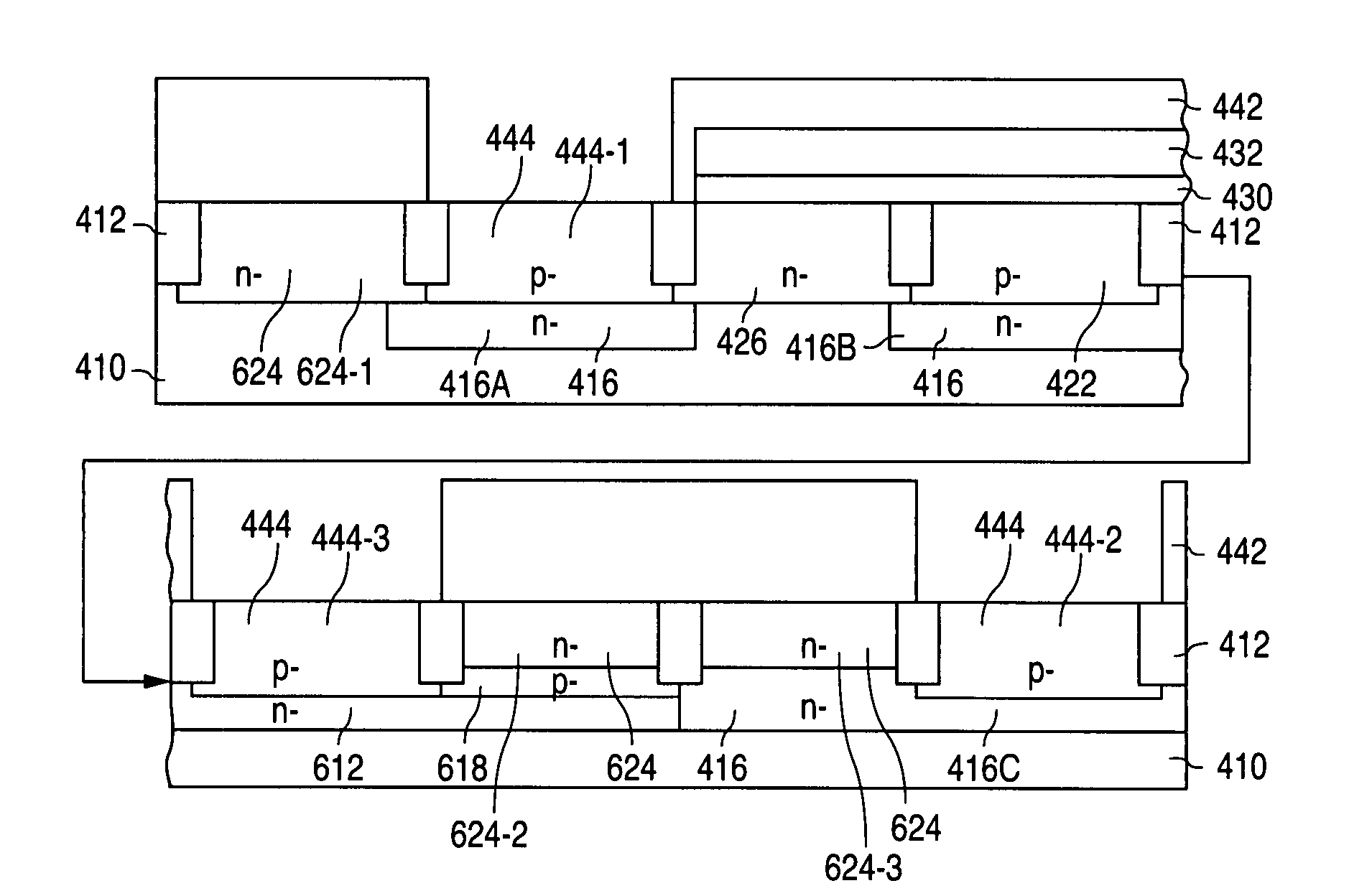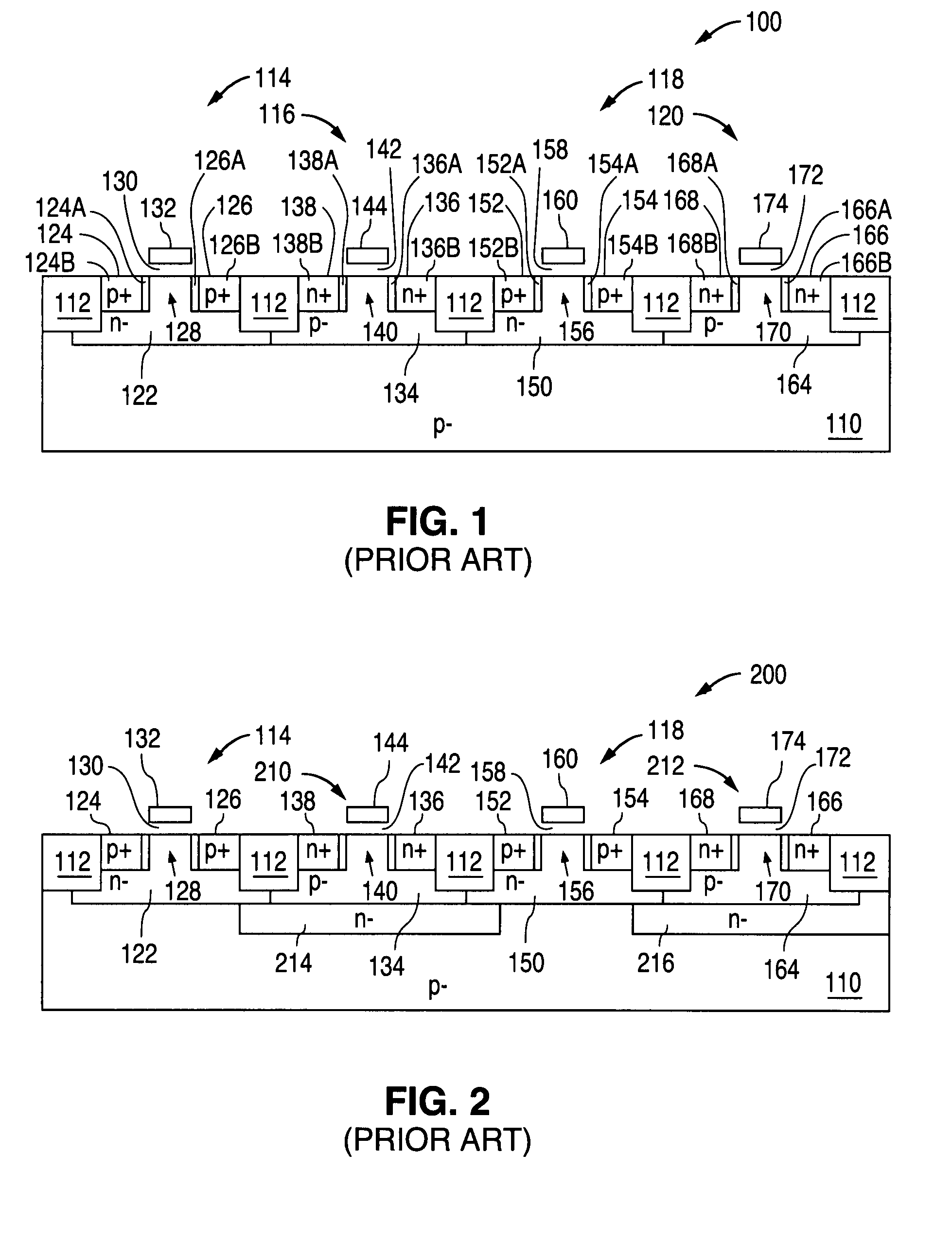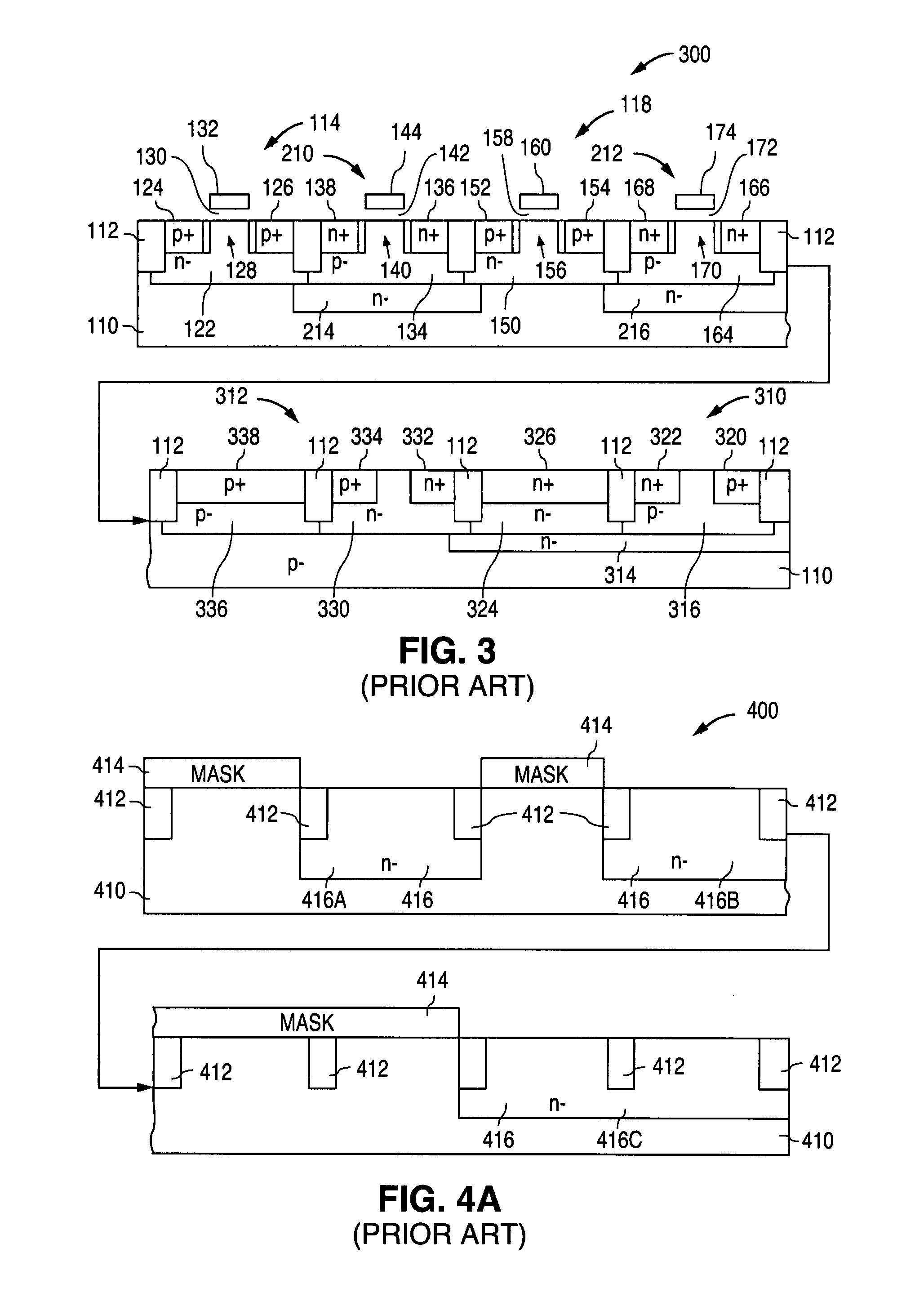Method of forming npn and pnp bipolar transistors in a CMOS process flow that allows the collectors of the bipolar transistors to be biased differently than the substrate material
a technology process flow, which is applied in the field of bipolar junction transistors, can solve the problems of not being able to bias the collector of the pnp transistor differently from the semiconductor material, and acting as a collector
- Summary
- Abstract
- Description
- Claims
- Application Information
AI Technical Summary
Benefits of technology
Problems solved by technology
Method used
Image
Examples
Embodiment Construction
[0043]FIG. 5 shows a cross-sectional view that illustrates an example of a BiCMOS transistor structure 500 in accordance with the present invention. As described in greater detail below, BiCMOS transistor structure 500 is formed in a process that allows the collector and semiconductor material to be biased differently.
[0044]As shown in FIG. 5, BICMOS transistor structure 500 is similar to BICMOS transistor structure 300 and, as a result, utilizes the same reference numerals to designate the elements which are common to both structures. BiCMOS transistor structure 500 differs from BiCMOS transistor structure 300 in that BiCMOS transistor structure 500 utilizes a pnp transistor 512 in lieu of pnp transistor 312.
[0045]PNP transistor 512, in turn, is similar to pnp transistor 312 and, as a result, utilizes the same reference numerals to designate the structures which are common to both transistors. As further shown in FIG. 5, pnp transistor 512 differs from pnp transistor 312 in that pn...
PUM
 Login to View More
Login to View More Abstract
Description
Claims
Application Information
 Login to View More
Login to View More - R&D
- Intellectual Property
- Life Sciences
- Materials
- Tech Scout
- Unparalleled Data Quality
- Higher Quality Content
- 60% Fewer Hallucinations
Browse by: Latest US Patents, China's latest patents, Technical Efficacy Thesaurus, Application Domain, Technology Topic, Popular Technical Reports.
© 2025 PatSnap. All rights reserved.Legal|Privacy policy|Modern Slavery Act Transparency Statement|Sitemap|About US| Contact US: help@patsnap.com



